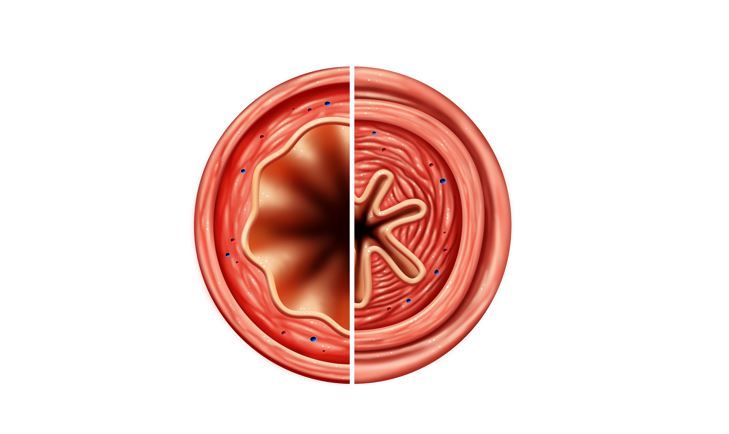- Clinical Technology
- Adult Immunization
- Hepatology
- Pediatric Immunization
- Screening
- Psychiatry
- Allergy
- Women's Health
- Cardiology
- Pediatrics
- Dermatology
- Endocrinology
- Pain Management
- Gastroenterology
- Infectious Disease
- Obesity Medicine
- Rheumatology
- Nephrology
- Neurology
- Pulmonology
ATS.2021: At-risk Asthma Phenotypes Defined Using 4 Simple Metrics
ATS.2021. Study authors categorized asthma patients using age at onset, T2 biomarkers, and IL-6 levels, creating 12 phenotypes for additional study.
©freshidea/stock.adobe.com

Patients with late-onset asthma and elevations in common biomarkers of inflammation may be at greatest risk for exacerbation-prone asthma while those with early-onset disease and similar biomarker elevations have the poorest lung function, according to results of a new study being presented at the upcoming American Thoracic Society International Conference, being held virtually May 14-19, 2021.
Type-2 inflammation has emerged as an important element in asthma phenotyping and research supports differences by age at onset as another. Plasma Il-6 level is a strong predictor of both asthma exacerbations and poorer lung function. Only partially understood, however, is the intersection of IL-6 with type-2 inflammation which the authors hypothesized would identify a high-risk asthma phenotype when found in a patient with late-onset disease.
Using data from the NHLBI's Severe Asthma Research Program 3, investigators identified 370 patients with baseline plasma IL-6 levels. Early- and late-onset asthma were defined as onset at age ≤12 or >12 years.
Participants were categorized by baseline elevations in 2 standard biomarkers of T2 inflammation: absolute blood eosinophils ≥300 cells/uL and/or FeNO>24 ppb and by IL-6 concentration (defined by median split [</> 1.77 pg/mL]).
Groups were identified as early- vs Iate-onset, T2 Lo, T2 Intermediate or T2 Hi (0, 1 or 2 T2 biomarker elevations), and each of these groups further defined by IL-6 Hi vs IL-6 Lo.

Exacerbations were defined as a corticosteroid burst of ≥3 days, an ED visit, or hospitalization.
Twelve asthma phenotypes were identified, ranging in size from 13 to 44 participants. IL-6 levels did not vary by IL-6 Hi subgroup.
Differences among groups
- Age: older patients more likely to be late-onset and IL-6-Hi
- Sex: women more likely to be IL-6-Hi
- Race: Asians more likely to be late-onset, T2-Hi, IL-6-Lo)
- BMI: IL-6-Hi groups higher
Exacerbations were higher in all IL-6 Hi patients but there were more exacerbations among late-onset T2 Hi/IL-6 Hi patients than in 9 of the 11 other subgroups (except early-onset T2-Hi/IL-6 Hi [p=0.14] and late-onset T2 Hi/IL-6 Lo [p=0.1]).
In contrast, FEV1% predicted was generally lower in the 6 IL-6 Hi groups, but lowest in the group of early-onset T2 Hi/IL-6 Hi.
Sputum eosinophils were highest in the 4 T2 Hi groups but tended to be lower in T2-Hi/IL-6 Hi vs the IL-6 Lo groups.
Total IgE levels tended to be higher, with higher T2 and IL-6 Hi groups, despite their older age. In contrast, specific IgE tests were higher in early-onset asthma with no apparent impact by IL-6 and minimally by T2 phenotype.
The authors note that stratifying asthma patients using “4 simple metrics” identifies distinct asthma phenotypes that may benefit from different approaches to treatment such as strengthened prevention efforts in phenotypes at higher risk of dangerous exacerbations (late onset, elevated inflammatory biomarkers) and a focus on medication adjustment and adherence monitoring in those with poor lung function (early onset, elevated biomarkers.)
The abstract, Age at onset, available T2 biomarkers and IL-6 levels jointly define at-risk asthma phenotypes, also appears in the Online Abstracts issue of the American Journal of Respiratory and Critical Care Medicine.
